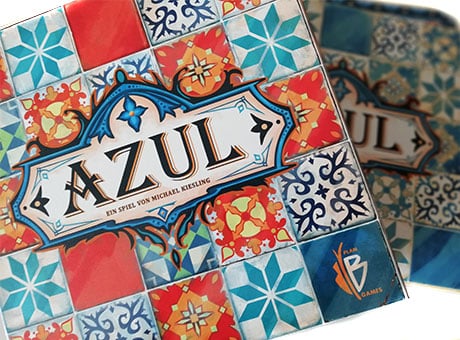
Azul is a strategy game that ensures a good opportunity for entertainment. It is easy to play and suitable for the whole family, which is why it was awarded for the “Best Board Game” in 2018
It was created by Michael Kiesling, who wanted to recreate the trade of the tile makers of King Manuel I of Portugal.
It is a game full of color that seeks that the participants decorate, by means of a defined strategy, a wall full of tiles of different types.
The more useful pieces you have on the board, the more points you get and therefore you win. The game will end when one of the players completes a horizontal row.
To win, you will have to take into account your teammates’ movements and make sure you don’t take too many unnecessary tiles, as these will only subtract points and may leave you in the last place.
Azul can be played by 2 participants and the maximum number of players is 4, so you will find four individual boards, each with two sides indicating a game mode, and the same number of point markers.
It also includes 9 tile displays, 100 tiles of different models, 1 fabric bag, and an instruction manual where you can consult the rules and the different ways to play.
- Azul invita a los artistas del azulejo a embellecer las paredes del palacio real de évora
- Cuando manuel i el afortunado, rey de portugal, visitó el palacio de la alhambra, quedó cautivado por la imponente belleza de la decoración
- Formada por losetas de cerámica de procedencia árabe a las que llamaban “azulejos”
- ¡elige con cuidado tu estrategia para convertirte en el artista preferido del rey!
- Producto en castellano
How to start playing Azul?

Before starting the game you must give each of the participants one of the individual boards. You must keep in mind that all of them must use the same side.
You’ll also have to assign a point marker to each one.
Now, you’re all ready to start having fun!
After everyone has the supplements, what you should do is put the tile displays in the center of the table, where they are visible to each of the participants.
If there are two people you should put 5 of them, if there are three they will be 7 and if you have the whole table you will use 9.
Azul Instructions. How to Play?
After all the tiles have been put in the bag, it is time to put four in each of the displays. The remaining tiles will be placed in the center of the table so that they are within reach of the players.
Remember that this game will have an indefinite number of rounds since it will only end when one of the participants completes one of the horizontal lines with the complete tiles.
The average time is 20 minutes when there are few players and 30 minutes when you fill a total of 4 participants.
Inside the box you will see that there is a piece that is different, it is the initial player marker. Whoever has this tile in his possession will be able to start the next round, which could be an additional advantage. To keep it you must be the first to take the tiles in the center of the table.
After all the elements are in position, you can start having fun. To determine who has the first turn you can implement any kind of drawing that is agreed by those who will participate.
What to do During your Turn in Azul?
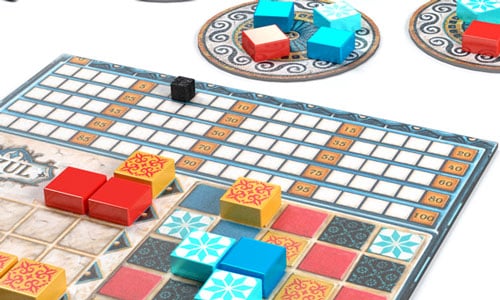
When the time comes you will have several options to implement your strategy. The first one is to take the tiles that have the same design and are located in one of the displays.
If you are not interested in any of the cards arranged in the displays, you can take all the ones that have the same design or color and are in the center of the table. The first one to make this move will take the marker of the initial player, which indicates that he will start in the next round.
The tiles you took, either from the displays or the center of the table, you must start placing on your board by horizontal lines. When arranging the tiles you chose you will find two possible situations, the first one is that you don’t manage to fill any of the horizontal lines and the second one is that you have too many.
In case you don’t get the chips, you can simply wait for the other round and try to fill in the empty space. On the contrary, if you have any left over, you will have to use them at the bottom of the board, where you will have to count them as negative points.
Remember that you can’t move your tiles after you’ve decided to place them, so it’s best to think about it before. Keep in mind that it is a matter of carrying out a strategy that allows you to accumulate as many points as possible.
How to Use the Tiles to Add-Up Points
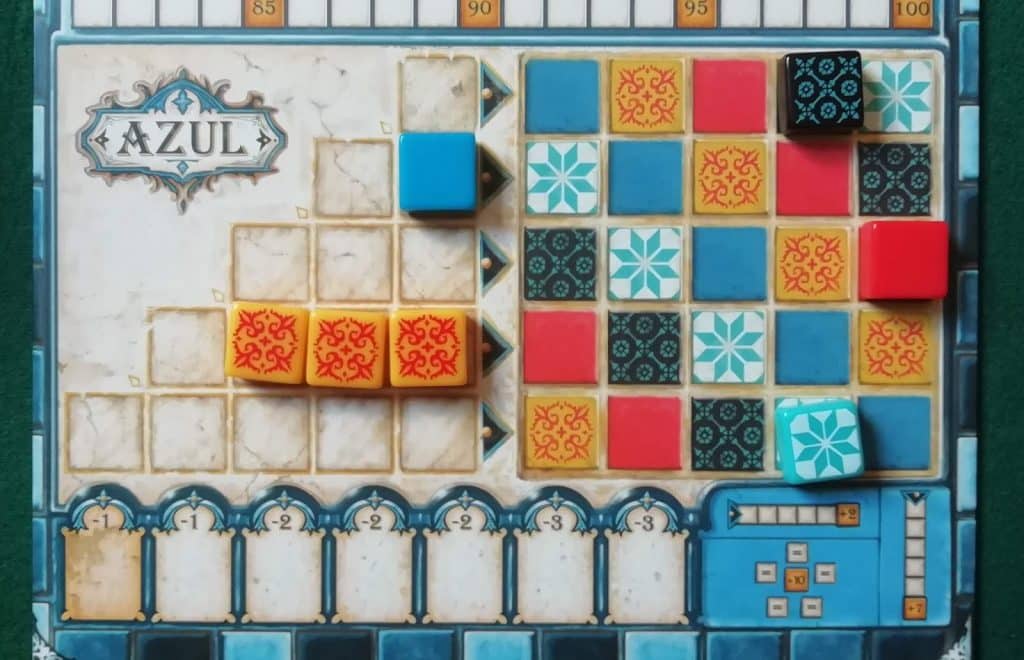
After finishing the round, the players must make a wall tile, that is, place the tiles that correspond to the pattern, which is on the other side of the board. This move is done simultaneously for all players.
For this moment of the game you should take into account the following recommendations:
- Check the Patterns: the first thing we recommend you do is to look at all the patterns you have on the board, so you can be sure of what you can do with the chips you have taken. You will only be able to move the tiles in those horizontal lines that you have completed, that is where none of them are missing. Every time you make a move you will get points.
- Remove the Remaining Tiles: When you complete the line and place the tile on your wall, you must discard the remaining tiles in the same row, i.e. you will only use the one that matches your pattern. The remaining tiles will be put in a separate place so that they do not get confused with the ones in play. These can be used later when the dynamic requires it.
- Azul invita a los artistas del azulejo a embellecer las paredes del palacio real de évora
- Cuando manuel i el afortunado, rey de portugal, visitó el palacio de la alhambra, quedó cautivado por la imponente belleza de la decoración
- Formada por losetas de cerámica de procedencia árabe a las que llamaban “azulejos”
- ¡elige con cuidado tu estrategia para convertirte en el artista preferido del rey!
- Producto en castellano
How to Calculate Points in Azul
As we already mentioned, the final goal of the game is to get the highest score at the table. The points will be counted after each of the rounds when the amount of tiles that were arranged in the center of the table is finished. Each player will keep his count with the help of the marker.
All tiles count, as they equal one point if you place it on your wall. However, if it has an adjacent tile it will have even more value. Each consecutive tile will give you an extra point, so it’s important to consider the location of the tiles when deciding for one.
Preparation of the Rounds in Azul
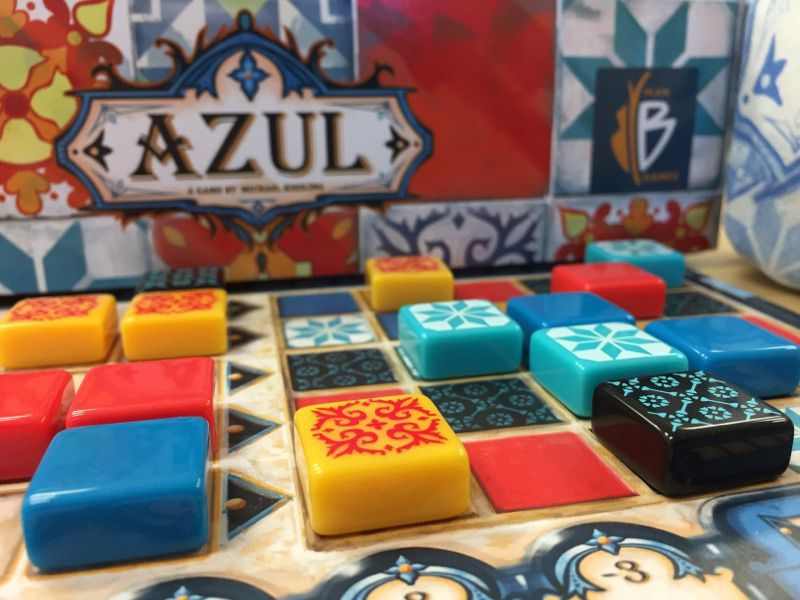
Rounds end when the center tiles run out, but that doesn’t mean the game is over. It is important to remember that this will only happen if one of the participants has completed the horizontal line of five tiles
This way, if no one has completed the requirement to end the game, what you will have to do is refill the displays with four tiles each. If you don’t get the ones in the bag you can start using the ones that have been discarded in the previous rounds and put in a separate place.
What Bonuses can you Get after Finishing the Game?
There are also bonus scores, which can only be quantified when the game is over.
- You will have 2 extra points for each horizontal line that you have fulfilled.
- If you got one vertical line with all the lines, you will have 7 extra points.
- Finally, if you manage to obtain all the tiles on your board with the same color or design, you will add 10 extra points.
If you were the player with the most points, you will be the winner of the game, but if there was someone who got the same amount as you, the victory will be for the one who has the most complete horizontal lines.
Azul was Awarded as “Best Game of 2018”
The Spiel des Jahres Award, one of the highest awards that can be given to a creator or designer of board games, was given to Michael Kiesling for the development of Azul. Achieving the title of the best board game of 2018
The prize has been awarded since 1978 in Germany and aims to recognize different factors, such as the design and quality of these entertainment items. Experts say it is one of the most important awards in this category.
Thanks to this award, the Blue game has a seal on its packaging that identifies it as a winner, which not only represents pride for its creators and designers but also is synonymous with quality for users, involving an increase in sales over the past year.
There’s more…
This is not the only award he has received, as it is the third recognition that Kiesling has achieved, so a new release is expected, which could be considered the sequel to Azul, should be released by the end of this year.
- Azul invita a los artistas del azulejo a embellecer las paredes del palacio real de évora
- Cuando manuel i el afortunado, rey de portugal, visitó el palacio de la alhambra, quedó cautivado por la imponente belleza de la decoración
- Formada por losetas de cerámica de procedencia árabe a las que llamaban “azulejos”
- ¡elige con cuidado tu estrategia para convertirte en el artista preferido del rey!
- Producto en castellano
Azul, a Simple but not Easy Game
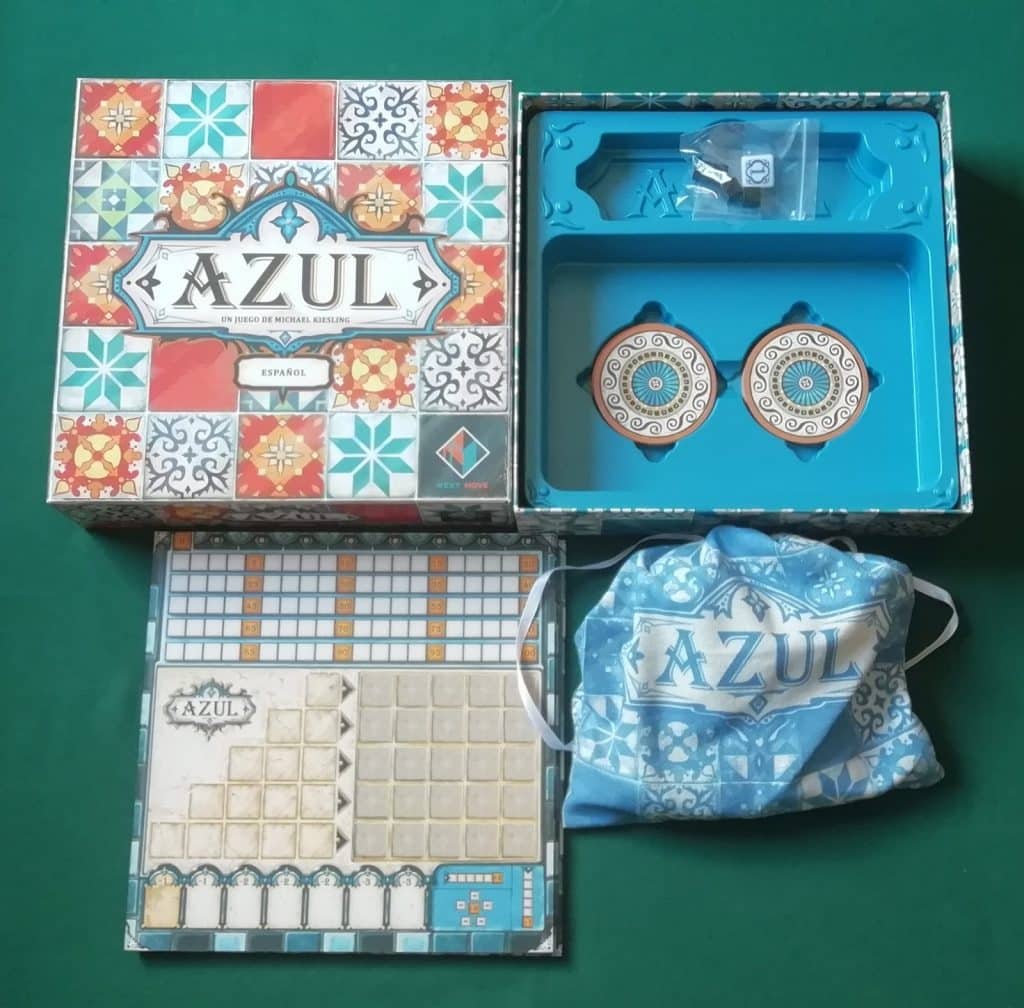
Michael Kiesling wanted to make a combination of several factors when creating Azul. The first thing he highlighted is the way to show a simple but not easy game, making it enjoyable for everyone.
t’s really easy to learn, but the moment you face your first game you realize that the complexity is infinite and that, even if you repeat it hundreds of times, you will probably never be able to understand it in its totality.
Kiesling took the time to think through every detail, to make sure that whoever plays it gets completely hooked. You may try different strategies in different games, but this will never be the same, so you won’t find one that works every time.
It’s so simple that you can have a good time with a child and even learn from their innocent strategies, which, by the way, often have impressive results. But it can also be the focus of conversations with adults, using complex methods that include mathematical operations and conspiracy theories.
It is really a very good element of entertainment for children and adults. Dare to try it, you will surely not be able to unhook yourself and, even if you don’t, you will want to keep trying until you find a way to play for victory.
I’m sure you will be interested in this articles:
Última actualización el 2024-07-27 / Enlaces de afiliados / Imágenes de la API para Afiliados
